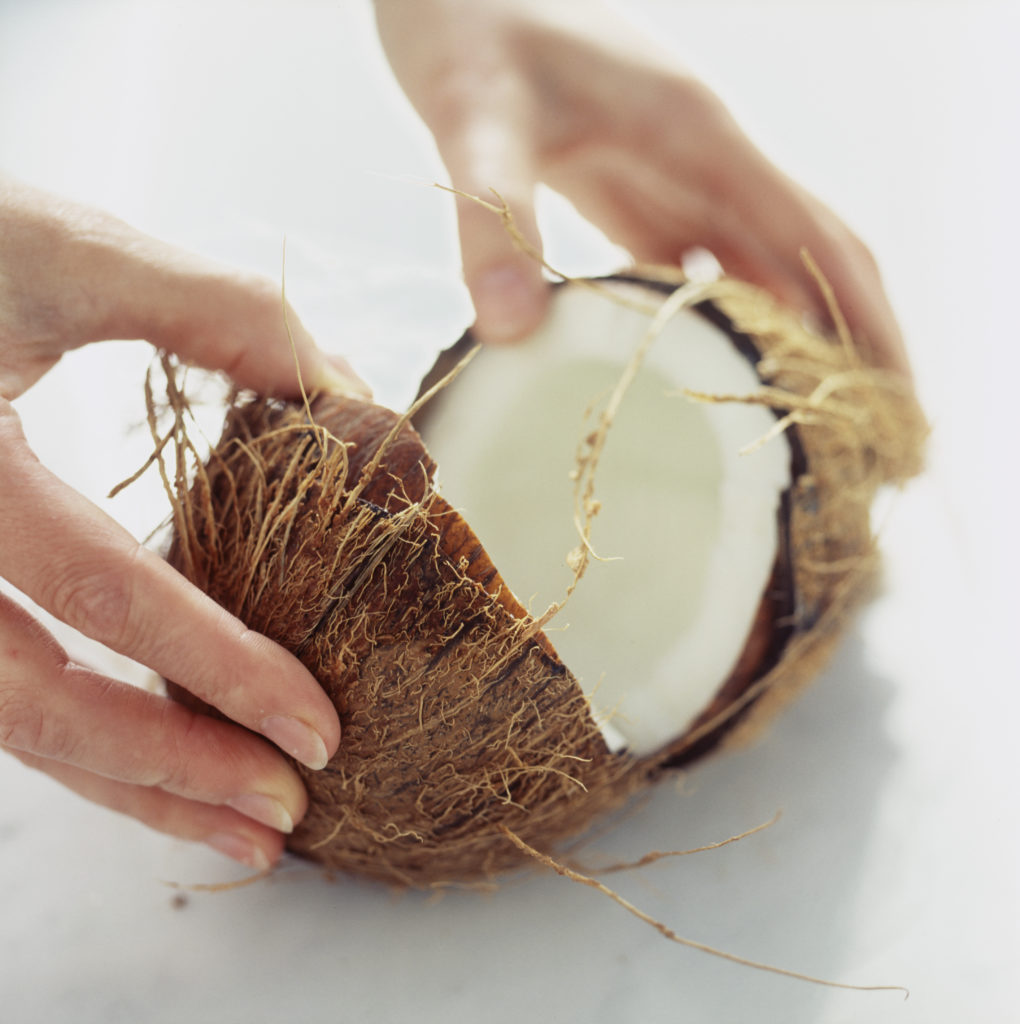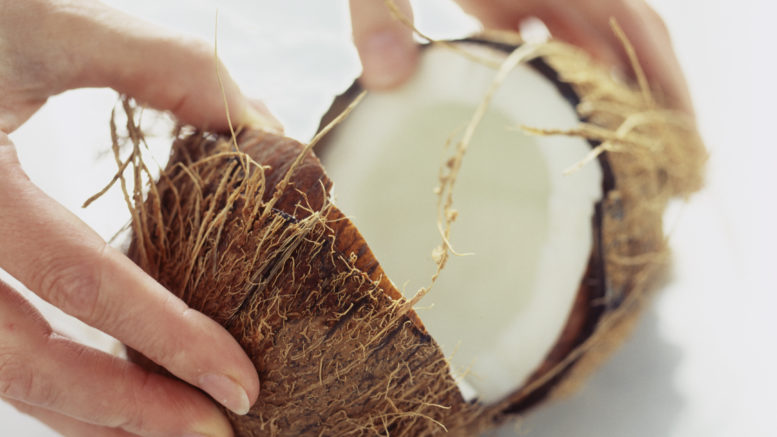
Pronounce it: koe-koe-nut
A large hairy, brown nut that grows on the coconut tree, found throughout the world’s tropical islands and countries. The coconut tree is known as the ‘Tree of Life’ given its usefulness: its wood is used for furniture and building, its branches make great thatched roofs, and its nuts for eating and drinking.
Inside the nut is white flesh which is used in both sweet and savoury dishes. The creamy milk commonly used in curry sauces and rice dishes does not actually come from the milky liquid in the centre of the nut, instead coming from the coconut milk and cream squeezed from the flesh.
Read our related health guides:
The health benefits of coconut water
The health benefits of coconut milk
The health benefits of coconut oil
Choose the best
Look for coconuts that are heavy for their size. To check for freshness, shake the nut – the more liquid you can hear the fresher the coconut.
Prepare it
If using a whole coconut, strip off the hairy bits, put the coconut into the oven at 180C for 15 minutes to shrink the shell, then punch a whole in the soft ‘eyes’ and drain out the liquid. Using a heavy cleaver, carefully crack the coconut into pieces and prise the flesh away from the skin with a small, sharp knife to remove the flesh.
To use the flesh for cooking, shred it with a coarse grater and store in the fridge for 1-2 days.
Store it
Chunks of fresh coconut stay fresh in the fridge for several days if stored in water which is changed daily.
Store desiccated and shredded coconut in an airtight container and keep in a cool, dry cupboard.

Be the first to comment on "Coconut"